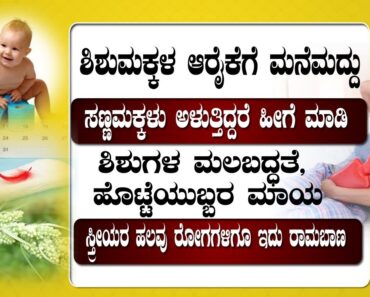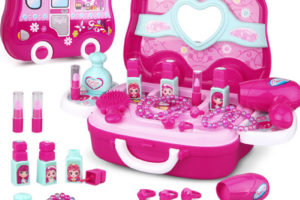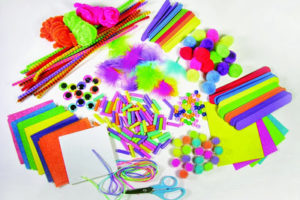Image: iStock
The umbilical stump usually falls off about one to two weeks after birth. At times, a tissue overgrowth (granuloma) is seen during the healing process of the umbilical cord stump. It is a pink or red, soft lump and is often wet. Clear or yellowish fluid might ooze out of it (1).
The granuloma becomes apparent after the separation of the umbilical cord stump (2). It prevents the development of the normal skin tissue around the belly button (umbilicus). This post tells you about the causes, symptoms, management, and prevention of umbilical granuloma in babies.
Causes Of Infant Umbilical Granuloma
The exact cause of infant umbilical granuloma is unknown. It may occur due to an inflammatory reaction to cord separation or a delay in cutting the cord. Some researchers also believe that the cord-cutting technique may also be responsible for umbilical granuloma in some cases (2).
Signs And Symptoms Of Umbilical Granuloma
The following are the commonly seen symptoms of umbilical granuloma in babies (2).
- A small swelling around the belly button
- Small reddish or pinkish lump visible within the belly button
- Skin around belly button seems tender
- Not painful unless accompanied by infection
When To Call The Doctor?
Call the doctor if you notice any of these signs (1) (3).
- Increasing redness in and around the umbilicus
- Foul-smelling discharge from the umbilicus
- Pink or yellowish discharge when infected
- The lump inside the belly button may appear gray or yellowish if infected
- Clear fluid constantly oozing from the umbilicus
- Baby seems unwell, has fever, and does not feed
- Baby cries when the belly is touched, suggesting the granuloma is painful
Uninfected granuloma does not hurt the baby. Therefore, see a doctor promptly if you notice your baby in pain.
Home Care For Umbilical Granuloma
Parents may follow the steps mentioned below to help the granuloma heal by itself. However, a doctor’s evaluation is mandatory before starting any home care (4).
- Wash your hands before and after cleaning around the granuloma to prevent any infections.
- Use a clean and moist swab or cloth to clean any drained fluids. Do not dab the cloth on the umbilicus. Instead, clean any drainage gently without applying any pressure.
- Gently pat the area dry with a clean and dry cloth. Let the umbilicus air dry.
- Avoid submerging the baby in water when bathing until the granuloma dries off.
- You may sponge the baby with warm water and a damp washcloth.
- Roll the top of the diaper and keep it under the navel. It will help promote air circulation to dry the granuloma.
Treatment For Umbilical Granuloma In Babies
The umbilical granuloma usually heals by itself within a week. However, it is essential to get it checked by the pediatrician since unhealed umbilical granuloma may take several weeks to cure, increasing the risk of infection.
The pediatrician may use the following treatment options to treat an umbilical granuloma if it does not resolve by itself within seven to 10 days or if there are signs of infection (2).
1. Topical salt treatment
Topical table salt treatment is found to be an effective and inexpensive remedy for umbilical granuloma. The doctor will guide you about the procedure, which consists of the following steps.
- Gently press the sides of the umbilicus to expose the granuloma.
- Apply a small pinch of salt over it.
- Cover the area with a clean gauze piece and let it sit for 30 minutes.
- After 30 minutes, clean the area using a warm damp gauze pad. Let it air dry.
- Repeat it thrice a day for three days.
Use a pinch of salt or in quantity suggested by the doctor to avoid damage to the areas around the umbilicus. Table salt application resolves the granuloma in most cases (5). If you notice no results, speak to the doctor.
2. Topical silver nitrate application
Silver nitrate treatment is one of the most used treatment modalities of umbilical granuloma. It is performed by a physician. The doctor performs three to four applications of silver nitrate on the granuloma in a gap of three to four days.
Silver nitrate has caustic/astringent effects, which could cure granuloma. The procedure may cause minor burns on the skin around the umbilicus. Therefore, this treatment should only be conducted by a healthcare provider who is an expert in the procedure.
3. Surgical interventions
Surgical treatment is usually needed if the granuloma does not respond to salt and silver nitrate treatment. It may be considered the first choice if the granuloma is infected. The doctor may consider any of the following surgical procedures to cure granuloma (6) (7) (8).
- Surgical excision: The granuloma tissue is excised, and silver nitrate is applied to the umbilicus to expedite the healing.
- Surgical litigation: The base of the granuloma is tied with surgical threads to cut the blood supply to the tissue. It causes the tissue to die and fall off in one to two weeks.
- Electrocautery: It is a cauterization procedure where an electrocauter is used to burn and destroy the granuloma.
- Cryosurgery: The granuloma tissue is subjected to extremely cold temperatures, causing it to die. The doctor may use liquid nitrogen or argon gas to perform this procedure.
Prevention Of Umbilical Granuloma In Infants
There is no way to prevent umbilical granuloma since its causes are not fully known. Research suggests that proximal clamping may reduce the risk of umbilical granuloma compared to conventional clamping (2). Proximal clamping is clamping the umbilical cord very close to the newborn’s body. Maintaining good hygiene until the umbilical stump falls off may also reduce the risk of granuloma.
An umbilical granuloma is a common occurrence in infants and usually does not cause any problems. Mild cases may not be noticeable to the parents since it does not cause any pain to the baby. Remember to take care of the umbilical cord stump to reduce the risk of any problems, including umbilical granuloma. If you notice any overgrowth of tissue in and around the umbilicus, consult a doctor for early detection and resolution of any granuloma.


































